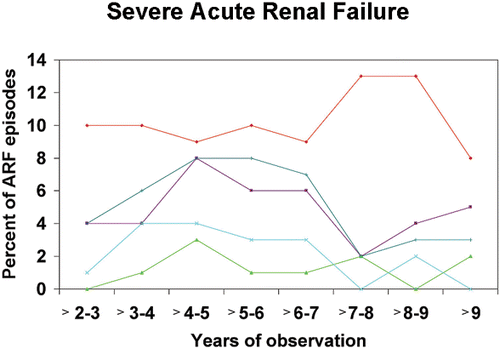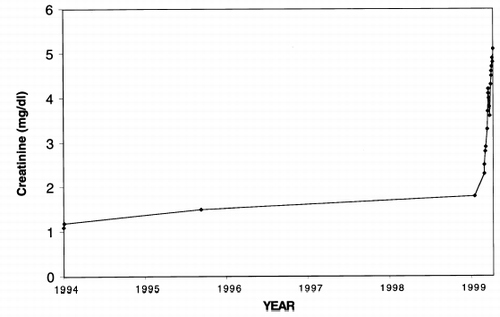Figures & data
Figure 1. Serum creatinine vs. time of observation for an individual with sporadic elevations of serum creatinine. This individual was followed for nearly five years and had two values >1.4 mg/dL while 87% of values were ≤1.4 mg/dL.

Figure 2. Percent of patients with sporadic increases in serum creatinine observed for various time periods. Increases in creatinine were >1.4 mg/dL with 60% of values ≤1.4 mg/dL.
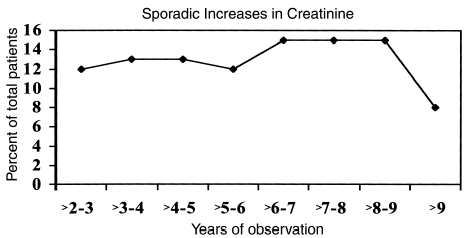
Figure 3. Percent of total patients with mild acute renal failure (serum creatinine increase <50% of baseline). ♦—individuals with normal baseline renal function who returned to a normal baseline. ▪—baseline creatinine 1.4–2.0 mg/dL who returned to that level after a bout of acute renal failure. ▴—individuals with a normal baseline who returned to a baseline 1.4–2.0 mg/dL.
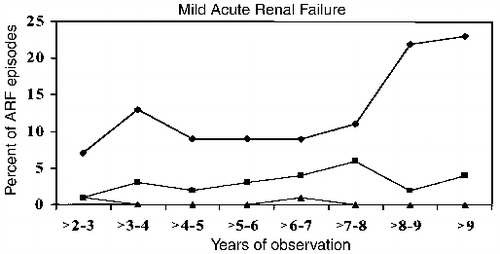
Figure 4. Percent of total patients with moderate acute renal failure (serum creatinine increase 50–300% of baseline). ♦—individuals with normal baseline renal function who returned to a normal baseline. ▪—baseline creatinine 1.4–2.0 mg/dL who returned to that level after a bout of acute renal failure. ▴—individuals with a baseline 1.4–2.0 mg/dL who returned to a baseline of greater than 50%. *—patients with no follow-up after acute renal failure. ×—individuals with normal renal function who returned to a baseline 1.4–2.0 mg/dL.
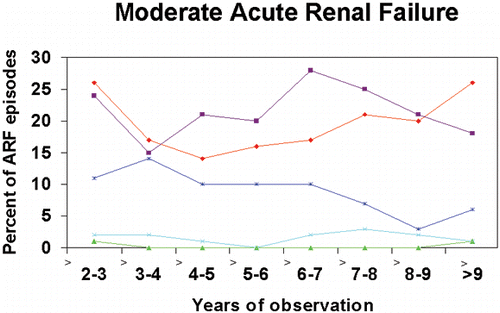
Figure 5. Serum creatinine vs. time for an individual with severe acute renal failure (serum creatinine >300% of baseline) on a substrate of abnormal renal function followed for more than eight years.
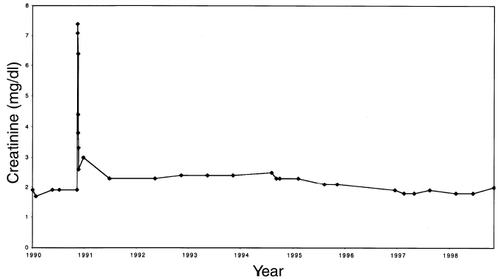
Figure 6. Percent of total patients with severe acute renal failure (serum creatinine >300% of baseline). ♦—individuals with normal baseline renal function who returned to a normal baseline. ▪—baseline creatinine 1.4–2.0 mg/dL who returned to that level after about of acute renal failure. ▴—individuals with a baseline 1.4–2.0 mg/dL who returned to a baseline of greater than 50%. *—patients with no follow-up after acute renal failure. ×—individuals with normal renal function who returned to a baseline 1.4–2.0 mg/dL.
